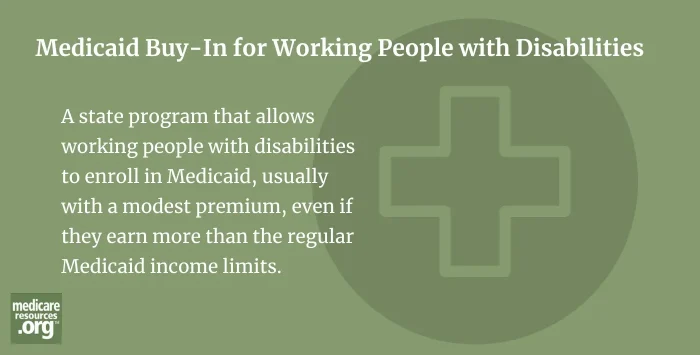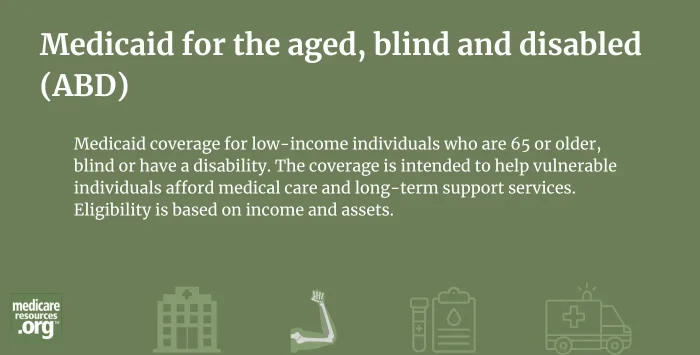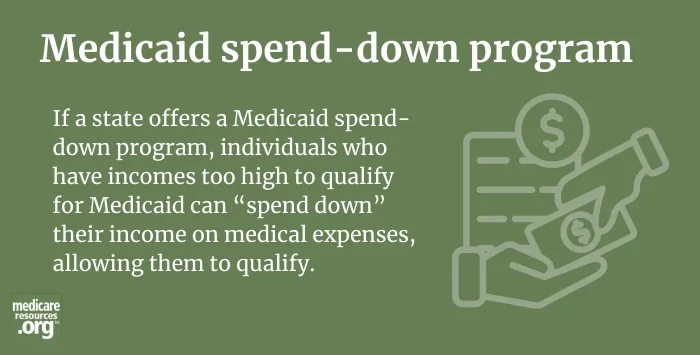What is the Medicaid buy-in for Working People with Disabilities?
Many beneficiaries are eligible for Medicare before age 65 because they have disabilities. Medicaid can be an important source of health and long-term care coverage for these beneficiaries. But if a beneficiary is able to return to work, their income may be too high to qualify for regular Medicaid benefits.
Federal law gives states the option to cover employed people with disabilities through a Medicaid Buy-In Program for Working People with Disabilities. These programs are often known as “Medicaid Buy-In Programs,” although the term “Medicaid buy-in” can also refer to other types of programs.
Forty-seven states had Medicaid buy-in programs for workers with disabilities as of 2025, with eligibility rules that differ by state. Eligible enrollees are allowed to “buy into” Medicaid by paying a premium (the median premium is $25/month) to enroll in Medicaid if they earn more than the regular income limits for Medicaid for the aged, blind and disabled (ABD), but not more than a certain percentage of the federal poverty level.
Different states have different names for their Medicaid buy-in programs for workers with disabilities. Some have “Medicaid Buy-In” in the program name, but some do not. For example, the program is called “Montana Medicaid for Workers with Disabilities (MWD)” in Montana, and “Health Benefits for Workers with Disabilities (HBWD)” in Illinois.
Who is eligible for a Medicaid buy-in program for working people with disabilities?
Medicaid buy-in program eligibility rules vary by state. The median income limit for Medicaid buy-in programs is 250% of FPL, which amounts to $3,261 per month in 2025. And the median asset limit is $10,000 for a single person and $14,470 for a married couple. Some states’ programs don’t have income or asset limits.
But it’s important to note that these programs usually have different limits for unearned income (e.g. Social Security Disability Insurance) than for earned income (e.g. from employment or running a business). When these programs have a limit on earned income, slightly less than half of that income is counted. So if an applicant’s income is mostly earned income, they may be eligible even with a total income well above the applicable limit, since not all of their earned income will be counted.
States can require Medicaid Buy-In enrollees to meet the same disability criteria used by the Supplemental Security Income (SSI) program. This means adults must have a medical or psychological condition that has lasted (or is expected to last) at least 12 months or will result in death.
States can also offer Medicaid Buy-In Programs to a “medical improvement group” that allows beneficiaries to qualify even though their disabling medical condition has improved.
Medicaid Buy-In Programs are not available to enrollees once they turn 65, even if they still have a disability.






